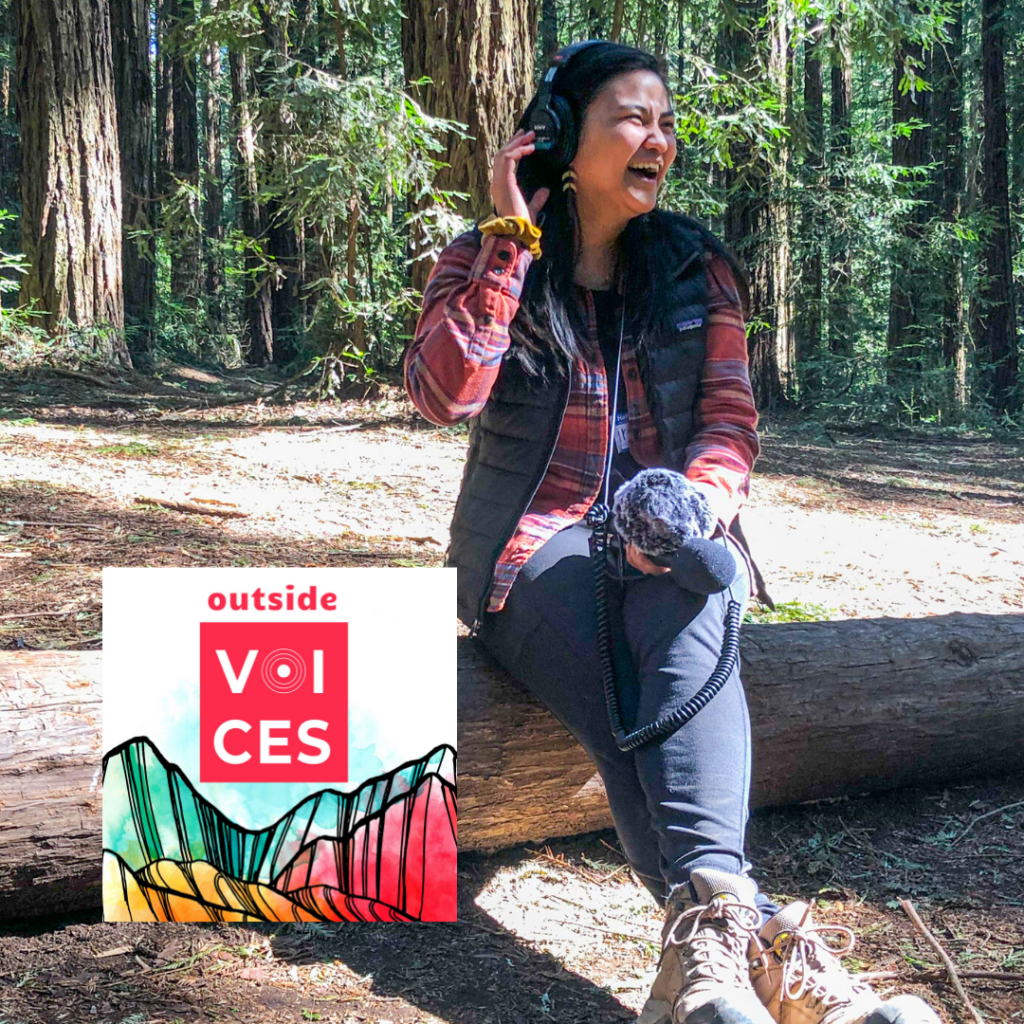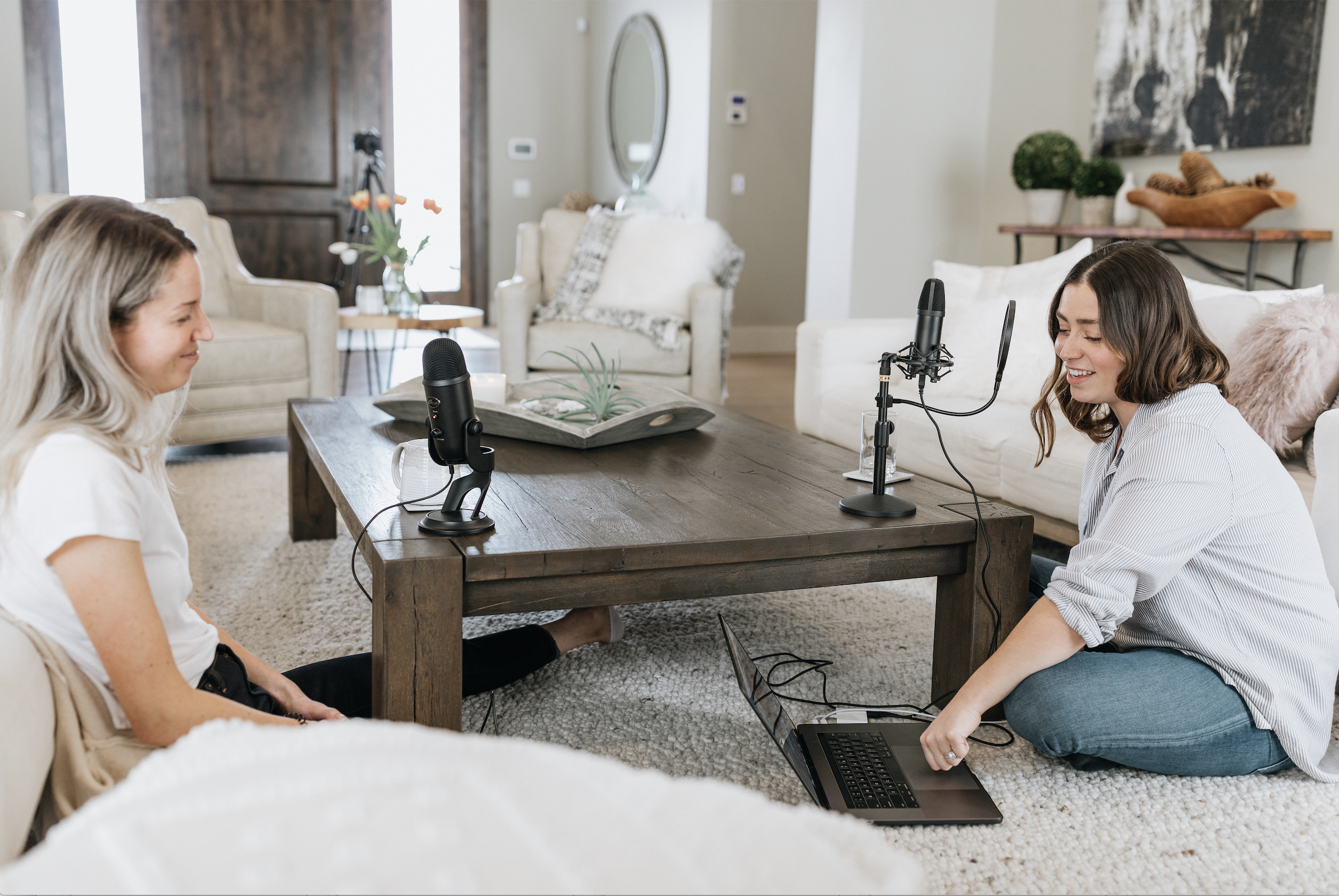Ever thought about starting a podcast for your nonprofit? Podcasting can be an ideal way to share information and stories about your organization in an engaging way that educates your listeners and promotes your mission. Listenership is only growing during COVID and the era of social distancing, and this unique storytelling medium can be produced and distributed remotely, too!

In June 2019, Resource Media launched our first podcast: Outside Voices. Since then, not only are we sharing stories from Black, Indigenous, and people of color and their relationships to nature and the outdoors on a monthly basis, we’re constantly learning along the way. Read on for tips and technical advice for starting your very own podcast.
Why should your organization start a podcast?
First, if you’re not totally convinced that podcasting is right for you or you’re debating between investing time and money in a video series or a podcast or something else, here are some benefits to this storytelling medium:
- Relationship-building: Podcasting is a great way to reach out to partner organizations with which you’ve always wanted to collaborate. Ask them to be a guest on your show and discuss shared issues and campaigns.
- Showcase thought leadership and expertise: Your team is doing incredible work, and others want to hear about it. Consider sharing a series of interviews with your program staff or weekly analysis of a particular issue.
- Connect with more supporters and/or reach a new audience: Looking to engage a younger audience? Approximately 67 percent of podcast listeners are between the ages of 18 and 44 years old. Check out Call for Content for even more demographics on who regularly streams podcasts.
- Deeper dive into the work you do: The average podcast episode is 30 to 45 minutes, leaving ample time to dig deeper into the issues you’re eager to unpack and add complexity through stories.
- Control the narrative: You get to publish the stories you want to see in the world without relying on pitching reporters to do it for you.
- Affordability and accessibility: Of course, a highly produced and polished podcast is fairly expensive, but you can pull something more simple yet still compelling together without breaking the bank. Plus, many listeners stream while multitasking- folding laundry, cooking, or going for a walk– so podcasts are fairly accessible, particularly for busy, smartphone-savvy individuals who are constantly on the go and don’t have time to sit down and read articles or watch videos.
Considerations before hitting record
Decide on a format and schedule
There are a lot of different formats out there, but the most popular three are:
- Interview (i.e. The Daily): One host (usually) interviews a different person on each episode, who brings their own unique experience and expertise. Host should be skilled at interviewing and willing to invest time in researching each guest.
- Host/Co-host (i.e Still Processing): Podcast is centered around the personality of the host and people come back because of the host (think of all the celebrities who host podcasts!) Can include interviews, can be a conversation between co-hosts or a monologue from the main host.
- Narrative (i.e. This American Life): Highly engaging story built around an interview (or multiple interviews), which includes contextual research, additional sounds (perhaps recorded in the field) and dynamic narration. High production value and time intensive.
Note that these formats often overlap with each other, and there are dozens of different ways to format a podcast. Outside Voices is somewhere in between interview and narrative and also produces episodes on a monthly schedule.
Think about your podcast topic and the type of content you want to create or repurpose. Which is the best format for telling those stories– a series of interviews with advocates working toward a common goal? A conversation between two Indigenous leaders unpacking complex and nuanced topics that matter to them and their communities?
Who is your ideal listener?
Podcasting is all about building a relationship between the host and the listener, so spend some time creating a profile of your target audience to understand who you’re talking to:
- What do they value and care about?
- Where do they spend most of their time?
- What content/media do they currently consume?
- Who do they trust?

What equipment and software do you need to get started?
You don’t necessarily need fancy equipment to produce a podcast, especially if you’re doing so remotely. There are a lot of opinions out there on what equipment is best, depending on your specific needs. Here’s what we use for Outside Voices:
- Microphone: You can use the microphone built into your smartphone (it’s actually really good!), a USB microphone that plugs into your computer (such as the Blue Yeti), or splurge on a professional microphone. At Outside Voices, we use Zencastr, Zoom, and smartphones for remote interviews and a Zoom H4N pro recorder and Sennheiser MD 46 microphone for in-person interviews or field recordings.
- Headphones: It’s always better to use headphones when editing your audio, and you’ll also need them if you use a recorder. We use the Sony MDR7506 Professional Large Diaphragm Headphones.
- Computer with editing software: There are a lot of options out there, from Garageband to Audacity to Logic Pro and Adobe Audition. We use Adobe Audition.
- A hosting plan: This is the place where you upload your audio files, podcast artwork, and descriptions, which generates something called an RSS Feed. You then submit the RSS Feed to podcast streaming platforms like Apple Podcasts, Spotify, and Stitcher. We use Libsyn.
- A passion (or patience!) for file organization! You’ll be managing and organizing a lot of different files, including large files, so make sure you have a good system in place with ample storage space. We use Google Drive.
What does the process involve?
- Pre-production: If you’re interviewing someone, this step involves outreach, scheduling, research and crafting your questions, plus a pre-interview to start building a relationship with the interviewee. During the pre-interview, you can explain the process and ask what they’d like to share with your audience, as well as anything they don’t want to discuss. Check out our tipsheet on Ethical Storytelling, for more ideas on ensuring a collaborative, equitable storytelling process that moves at the speed of trust and consent.
- Production: Here’s where you hit “record”! Allow ample time– around 2 hours– for your conversation, whether you decide to conduct it remotely or in-person. Make sure you’re both somewhere quiet where there’s less potential for interruptions. A few things to remember during this stage:
- Ask follow-up questions to really draw out rich stories and delve deeper into your interviewee’s experiences. Get them to paint a picture for you and describe sights, smells, and sounds. Ask, “do you remember how you felt when that happened?” or “can you give me an example?”
- Remind yourself and your interviewee that you aren’t recording them live, meaning it’s okay if you make mistakes because you can always go back and edit or re-record. And, it’s okay if you end up wanting to omit a comment or entire section of your conversation if either you or your interviewee later decide they’d rather not air it.
- Post-production: You can decide what level of post-production you want to invest in your podcast. Maybe you’re repurposing content from a series of recorded webinars and want to make it available through a podcast, no editing necessary. Perhaps you want to build out a script, write and record narration, and spend time editing (or hire a sound editor) to craft an engaging narrative. Or you’ve decided your format is a weekly show with two co-hosts unpacking various topics, and you need light editing to add music here and there. This is the stage that varies the most in terms of time and budget, so make decisions early about what this should look like based on your resources.
- Distribution and promotion: Yay! You did it! You recorded an episode! Now, it’s time to share it with the world. This is when you upload your podcast into your hosting service, update your website, and promote on social media. You can also encourage cross-posting and share promotional language and materials with the interviewee, the sponsor, any partner organizations or relevant individuals and organizations that may be interested in the topic.
Ready to get started? Try practicing with your colleagues or even willing friends and family members. Consider recording seasons ahead of time and schedule recording breaks so you don’t feel like you have to constantly churn out episode after episode. And remember that podcasting is a medium that you can have fun with, keep it a little more casual, and showcase your personality in addition to your expertise, since building a relationship between host(s) and listeners is so important. Please reach out to us if you’d like to explore how to share the stories you want to tell via podcasting. Good luck, pace yourself, and have fun!
— Sarah Shimazaki
Program Director
Host and Producer of Outside Voices
